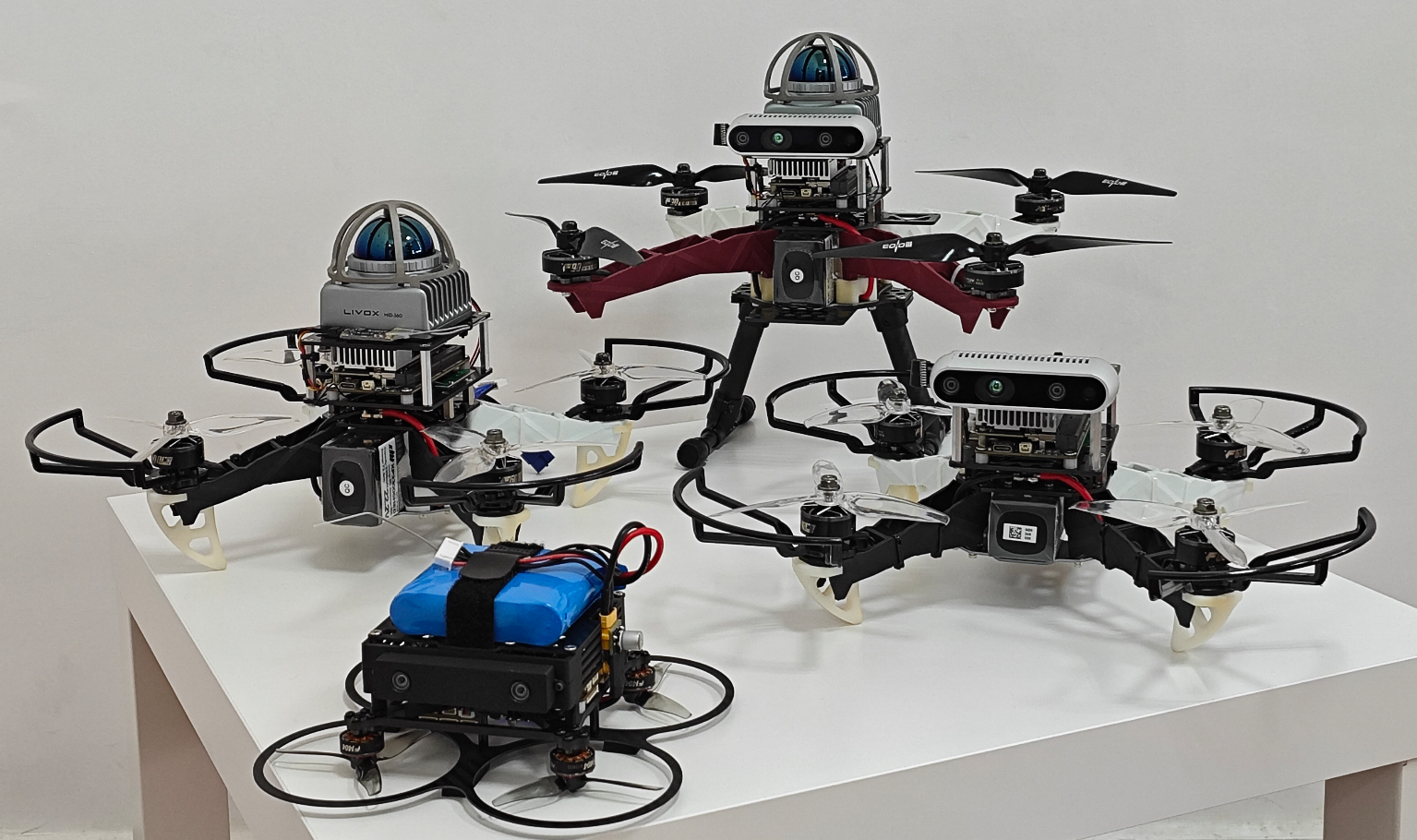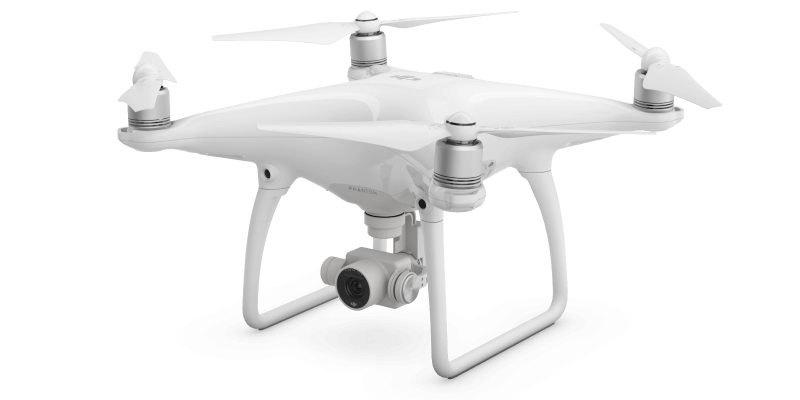UniQuad: A Unified and Versatile Quadrotor Platform Series for UAV Research and Application

0

Sign in to get full access
Overview
- Presents a new quadrotor platform called UniQuad, designed for versatile UAV research and applications
- UniQuad is a modular and customizable quadrotor system that can be configured for different research and real-world use cases
- The platform aims to provide a unified and standardized solution for the UAV research community
Plain English Explanation
The paper introduces a new quadrotor platform called UniQuad that is designed to be versatile and customizable for a wide range of UAV research and applications. Quadrotors, which are a type of drone with four propellers, are commonly used in robotics and autonomous systems research. However, often these quadrotor platforms are highly specialized and not easily adaptable to different research needs.
The UniQuad platform aims to address this by providing a modular and configurable design. Researchers can customize the UniQuad to their specific requirements, such as altering the size, weight, or sensor configuration. This allows the same platform to be used for a variety of studies, from modular-multi-rotors-from-quadrotors-to-fully to quadformer-learning-based-detection-cyber-attacks-quadrotor to experimental-system-design-active-fault-tolerant-quadrotor.
By providing a unified and standardized platform, the researchers hope to enable more effective collaboration and knowledge sharing within the UAV research community. This can help accelerate advancements in areas like unifying-foundation-models-quadrotor-control-visual-tracking and trajectory-planning-tracking-hybrid-flying-crawling-quadrotors.
Technical Explanation
The paper presents the design and development of the UniQuad, a modular and customizable quadrotor platform for UAV research and application. The UniQuad is designed to be a unified solution that can be easily reconfigured to meet the diverse needs of the research community.
The key features of the UniQuad platform include:
- Modular construction with interchangeable components (e.g., flight controllers, motors, propellers)
- Customizable size, weight, and sensor payload to support a wide range of research and real-world use cases
- Standardized interfaces and communication protocols to facilitate integration with external systems
- Open-source hardware and software designs to promote collaboration and knowledge sharing
The authors describe the detailed design and implementation of the UniQuad, including the mechanical, electrical, and software architectures. They also present the results of extensive testing and evaluation, demonstrating the platform's versatility and performance across different configurations and scenarios.
Critical Analysis
The UniQuad platform presented in this paper addresses an important need in the UAV research community for a versatile and customizable quadrotor system. The modular and configurable design is a key strength, as it allows researchers to adapt the platform to their specific requirements without having to build custom solutions from scratch.
One potential limitation mentioned in the paper is the trade-off between customization and platform complexity. The more flexibility the UniQuad offers, the more challenging it may be to maintain and operate the system, especially for researchers without extensive robotics experience. The authors acknowledge this challenge and suggest that providing comprehensive documentation and support resources will be crucial for the wider adoption of the platform.
Additionally, while the paper demonstrates the UniQuad's performance in various test scenarios, it would be valuable to see more real-world deployment and validation of the platform in actual research projects and applications. This could help further validate the platform's capabilities and identify any additional challenges or limitations that may arise in practical use cases.
Overall, the UniQuad platform represents a promising step towards a more unified and versatile quadrotor solution for the UAV research community. By addressing the need for customization and collaboration, this work has the potential to drive further advancements in areas like autonomous aerial systems, perception, and control.
Conclusion
The UniQuad platform presented in this paper offers a novel and unified approach to quadrotor design for UAV research and applications. By providing a modular and customizable system, the UniQuad aims to enable more effective collaboration and knowledge sharing within the research community, ultimately accelerating progress in areas like modular-multi-rotors-from-quadrotors-to-fully, quadformer-learning-based-detection-cyber-attacks-quadrotor, unifying-foundation-models-quadrotor-control-visual-tracking, and trajectory-planning-tracking-hybrid-flying-crawling-quadrotors. The extensive testing and evaluation presented in the paper demonstrate the platform's capabilities, and with continued development and real-world deployment, the UniQuad has the potential to become a valuable tool for the broader UAV research community.
This summary was produced with help from an AI and may contain inaccuracies - check out the links to read the original source documents!
Related Papers


0
UniQuad: A Unified and Versatile Quadrotor Platform Series for UAV Research and Application
Yichen Zhang, Xinyi Chen, Peize Liu, Junzhe Wang, Hetai Zou, Neng Pan, Fei Gao, Shaojie Shen
As quadrotors take on an increasingly diverse range of roles, researchers often need to develop new hardware platforms tailored for specific tasks, introducing significant engineering overhead. In this article, we introduce the UniQuad series, a unified and versatile quadrotor platform series that offers high flexibility to adapt to a wide range of common tasks, excellent customizability for advanced demands, and easy maintenance in case of crashes. This project is fully open-source at https://hkust-aerial-robotics.github.io/UniQuad.
Read more7/8/2024


0
An Open-source Hardware/Software Architecture and Supporting Simulation Environment to Perform Human FPV Flight Demonstrations for Unmanned Aerial Vehicle Autonomy
Haosong Xiao, Prajit Krisshnakumar, Jagadeswara P K V Pothuri, Puru Soni, Eric Butcher, Souma Chowdhury
Small multi-rotor unmanned aerial vehicles (UAVs), mainly quadcopters, are nowadays ubiquitous in research on aerial autonomy, including serving as scaled-down models for much larger aircraft such as vertical-take-off-and-lift vehicles for urban air mobility. Among the various research use cases, first-person-view RC flight experiments allow for collecting data on how human pilots fly such aircraft, which could then be used to compare, contrast, validate, or train autonomous flight agents. While this could be uniquely beneficial, especially for studying UAV operation in contextually complex and safety-critical environments such as in human-UAV shared spaces, the lack of inexpensive and open-source hardware/software platforms that offer this capability along with low-level access to the underlying control software and data remains limited. To address this gap and significantly reduce barriers to human-guided autonomy research with UAVs, this paper presents an open-source software architecture implemented with an inexpensive in-house built quadcopter platform based on the F450 Quadcopter Frame. This setup uses two cameras to provide a dual-view FPV and an open-source flight controller, Pixhawk. The underlying software architecture, developed using the Python-based Kivy library, allows logging telemetry, GPS, control inputs, and camera frame data in a synchronized manner on the ground station computer. Since costs (time) and weather constraints typically limit numbers of physical outdoor flight experiments, this paper also presents a unique AirSim/Unreal Engine based simulation environment and graphical user interface aka digital twin, that provides a Hardware In The Loop setup via the Pixhawk flight controller. We demonstrate the usability and reliability of the overall framework through a set of diverse physical FPV flight experiments and corresponding flight tests in the digital twin.
Read more9/9/2024
📉

0
Modular Multi-Rotors: From Quadrotors to Fully-Actuated Aerial Vehicles
Jiawei Xu, Diego S. D'Antonio, David Salda~na
Traditional aerial vehicles have specific characteristics to perform specific tasks but designing a versatile vehicle that can adapt depending on the task is still a challenge. Based on modularity, we propose an aerial robotic system that can increase its payload capacity and actuated degrees of freedom by reconfiguring heterogeneous modules to adapt to different task specifications. The system consists of cuboid modules propelled by quadrotors with tilted rotors. We present two module designs with different actuation properties. By assembling different types of modules, H-ModQuad can increase its actuated degrees of freedom from 4 to 5 and 6 depending on its configuration. By extending the concept of actuation ellipsoids, we find the body frame of a vehicle with which the controller can maximize the maximum thrust. We use polytopes to represent the actuation capability of the vehicles and examine them against task requirements. We derive the modular vehicles' dynamics and propose a general control strategy that applies for all possible numbers of actuated degrees of freedom. The design is validated with simulations and experiments using actual robots, showing that the modular vehicles provide different actuation properties.
Read more5/2/2024


0
Automated Cinematography Motion Planning for UAVs
Animesh Nema, Christopher Grontkowski, Derek Calzada, Sanjuksha Nirgude
This project aimed to develop an automated cinematography platform using an unmanned aerial vehicle. Quadcopters are a great platform for shooting aerial scenes but are difficult to maneuver smoothly and can require expertise to pilot. We aim to design an algorithm to enable automated cinematography of a desired object of interest. Given the location of an object and other obstacles in the environment, the drone is able to plan its trajectory while simultaneously keeping the desired object in the video frame and avoiding obstacles. The high maneuverability of quadcopter platforms coupled with the desire for smooth movement and stability from camera platforms means a robust motion planning algorithm must be developed which can take advantage of the quadcopter's abilities while creating motion paths which satisfy the ultimate goal of capturing aerial video. This project aims to research, develop, simulate, and test such an algorithm.
Read more9/4/2024